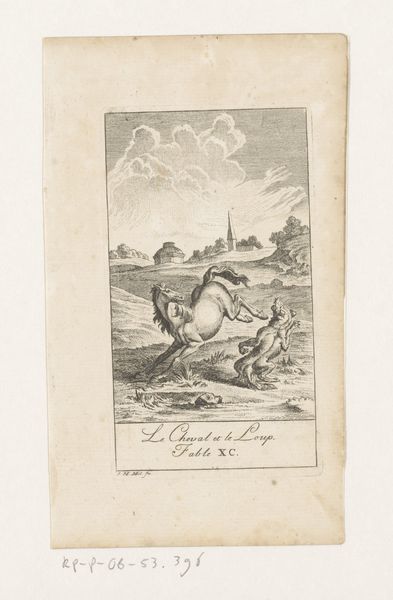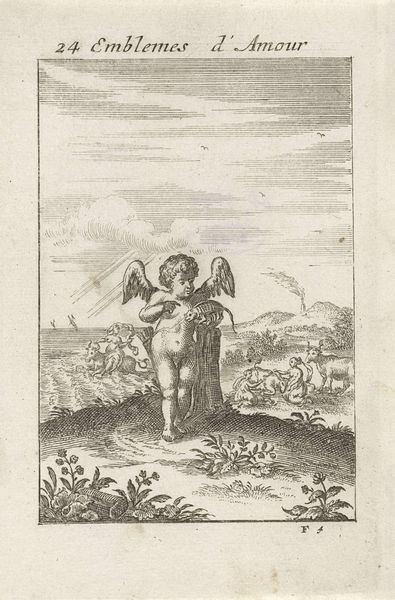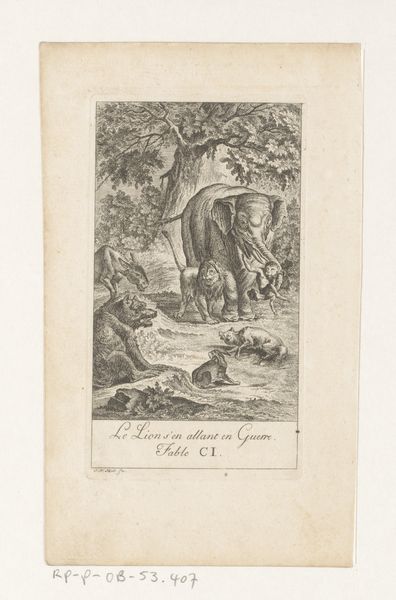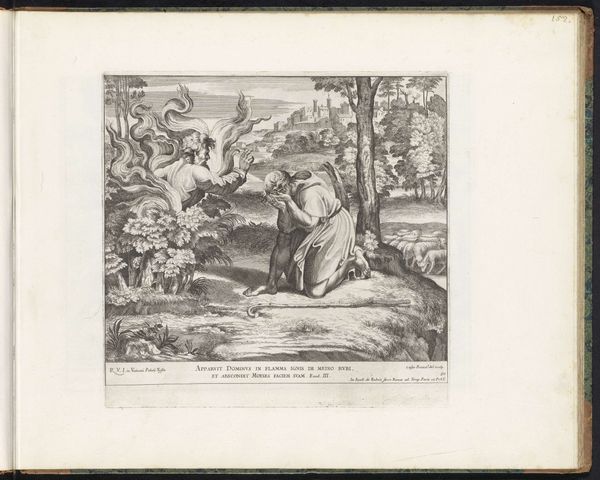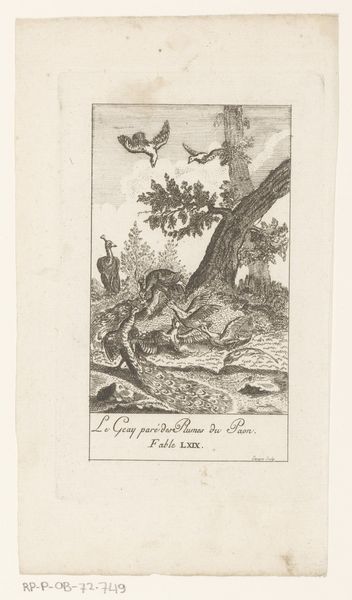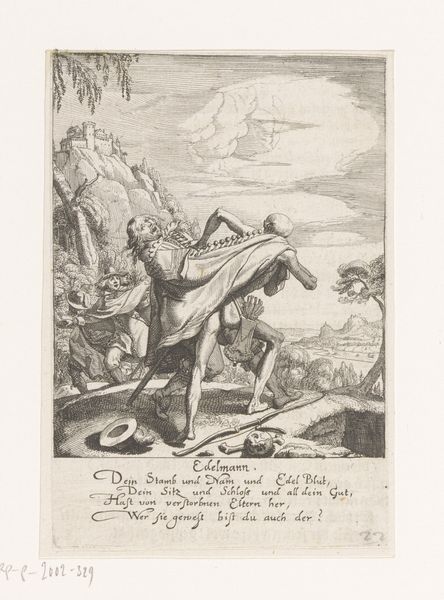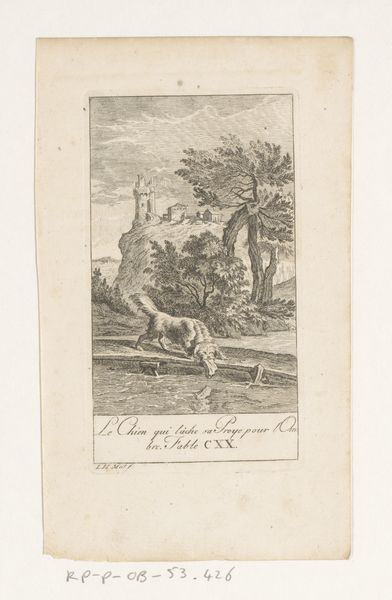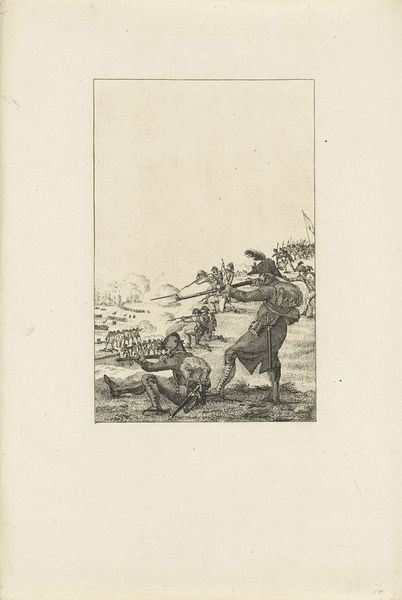
Dimensions: height 163 mm, width 11 mm
Copyright: Rijks Museum: Open Domain
Curator: This engraving, "Fabel van het paard en de wolf," or "Fable of the Horse and the Wolf", was completed in 1776. It shows the scene in a rustic landscape. Made by Bertin, the piece combines the delicacy of engraving with the dramatic themes often found within Romanticism. Editor: It strikes me as almost comical at first glance! The horse looks like it's in utter panic, nearly falling over as it confronts the wolf. There is so much negative space though—the setting itself, a small church atop a distant mountain. This seems deliberate but somewhat unbalanced. Curator: I think your initial reaction nails part of the fable’s charm. But observe how the Romantic style informs this drama. The placement of the figures relates the immediate conflict of these animals with this grand background, almost making it a staged event, as if for social critique or for an operetta about conflict. Editor: The body language of the two figures says it all though. The horse appears regal, almost arrogant in its distress, rearing back while still very much holding his position as a prominent figure in the setting; Meanwhile, the wolf cowers in seeming guilt or in an obvious recognition of his physical disadvantage relative to the size and demeanor of the other beast. Curator: Right. Aesop's fables often explored social relationships through animal allegory. Think about the horse—it symbolized nobility, power, even war during that era. The wolf, representing predation or threat, underscores societal hierarchies and perceived dangers to such established hierarchies. But here’s a riddle, who benefits more in the scenario portrayed by this engraving, and what do each lose? Editor: Good questions, Curator. For one, consider that church, steeple and other symbolic objects and placement choices; the spire draws our eyes vertically, emphasizing religious and ethical undertones that point to questions of how we judge those we deem dangerous; and given the horse represents “nobility,” perhaps our perceptions of what exactly comprises it as well. Very well. Curator: Thank you. A last thought: What do these symbols tell us about ourselves, if we are still seeing variations on similar figures, today? Editor: Well, with the starkness of its depiction and the subtle emotional layers that build on initial first-impressions of humor, and almost caricature, I am struck that these animal symbols are probably universal.
Comments
No comments
Be the first to comment and join the conversation on the ultimate creative platform.
